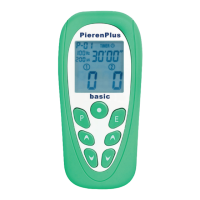What to do if stimulation is not felt with Pierenkemper Medical Equipment?
- BBilly GreerAug 4, 2025
If you're not feeling the stimulation or it's not strong enough with your Pierenkemper Medical Equipment, first ensure the electrodes are correctly placed on your skin, maintaining a minimum distance of 2 cm between them to avoid contact. If the intensity is too low, increase it using the appropriate keys until you feel the stimulation well, but without pain or discomfort. Also, weak batteries can cause this issue, so try inserting new batteries or accumulators.

